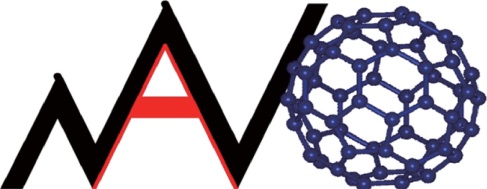 |
Nanoscale Physics & Devices Laboratory, Institute of Physics, Chinese Academy of Sciences 2014, Volume 9, Number 1 |
|---|
Address: No.8 South Street 3, Zhongguancun, Haidian District, Beijing 100190, China
Website: http://nano.iphy.ac.cn
Key Contact
Prof. Hong-Xing Xu
Director of Nanoscale Physics & Devices Laboratory
Tel: +86-10-82648091
E-mail: hxxu@iphy.ac.cn
Brief History
Formerly known as Beijing Vacuum Physics Laboratory of Chinese Academy of Sciences since 1985, Nanoscale Physics & Devices Laboratory (NPDL) was established in 2001. The mission of NPDL is to construct and study nanomaterials that address the challenges presented by the national research strategy. For more than 20 years, NPDL has dedicated to the study of fundamental physics related to nanomaterials and their applications in information and energy devices.
Today, Peking University is frequently placed as one of the best comprehensive universities in China by many national and international rankings. The University consists of 30 colleges and 12 departments. It embraces diverse branches of learning in natural sciences, engineering, medical sciences, management, social sciences and humanities.
Research Foci
Nano-Plasmonics
The field of Plasmonics concerns the manipulation of light at nanometer scale. Its physical basis is the surface plasmon (SP) resonances in metal nanostructures, where SPs are formed by collective oscillations of free electrons in metal. The properties of SP resonance depend strongly on the material and the structure and can be classified into two categories, namely, the propagating and the localized SPs. Based on these two diferent types of SPs, metal nanostructures have shown many fantastic properties, which lead to the applications of plasmonics in the fields of information technology, biological sensing, renewable energy and super-resolution imaging, etc.
Nanomaterials and Nanodevices
The fabrication and application of nanomaterials and nanodevices are one of the most active and important research fields internationally. A promising alternative route to make even smaller functional nano-materials and devices is the autonomous ordering and assembly of atoms and molecules on surfaces that are atomically defined. This approach combines the ease of fabrication with exquisite control on the shape, composition and mesoscale organization of the surface structures formed.
Nano- and Molecular Electronics
Nanoscale and molecular structures possess very difierent physical properties and allow scientists to explore new quantum phenomena on electron motion, photon propagation and spin properties. It is expected that this research will enable constructing electronic and photon-electronic devices with new functionalities, based on new principles, by using atoms and molecules as building blocks.
Surface Physics and Chemistry
Solid surfaces provide the necessary substrates for nano/molecular structures and devices and can be altered through the adsorption of organic functional molecules or the combination with different heterostructures in a layered system. The development of scanning tunneling microscopy (STM) techniques has allowed the atomic scale precision and high energy resolution on surfaces in the study of nanostructures and individual molecules.
Molecular Electronics and Nanodevice Fabrication
As the size of physical systems goes down to nanometer, fantastic quantum effects may emerge due to the interaction between the systems and the environments, such as the confinement of charge carriers on surfaces and interfaces. Our research interests focus on understanding the fundamental physics that determines the behaviors related to charge transport in mesoscopic systems, and constructing novel nanostructure devices.
Mesoscopic and nanoscale electron transport
Research interests cover a broad range of low dimensional electron systems, such as two-dimensional (2D) electron systems based on GaAs/AlGaAs heterostructures, graphene, topological insulators and oxide interfaces, as well as lower dimensional structures fabricated from 2D materials. Electron transport properties are studied down to miliKelvin temperatures and in high magnetic fields. Many spectroscopic techniques such as nuclear magnetic resonance, microwave, electronic noise spectroscopy and optical spectroscopy will also be used as auxiliary tools for probing the electronic states.
Graphene Nanostructures toward Device Applications
Research carried out in this group includes the following few directions: Developing state-of-the-art techniques, including both "bottom-up" and "top-down" strategies, to fabricate graphene nanostructures with well-defined edge structures; exploring the size- and edge- related new physical phenomenon using optical and electrical spectroscopy; using these graphene nanostructures to build prototypes of electronic devices for memories, sensors, and transistors.